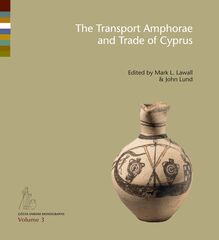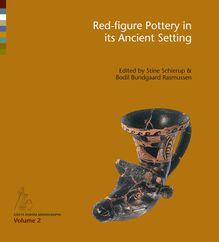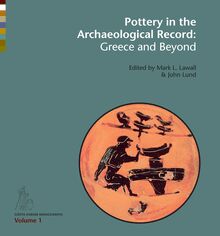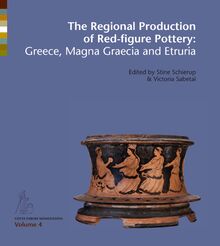-
 Univers
Univers
-
 Ebooks
Ebooks
-
 Livres audio
Livres audio
-
 Presse
Presse
-
 Podcasts
Podcasts
-
 BD
BD
-
 Documents
Documents
-
- Cours
- Révisions
- Ressources pédagogiques
- Sciences de l’éducation
- Manuels scolaires
- Langues
- Travaux de classe
- Annales de BEP
- Etudes supérieures
- Maternelle et primaire
- Fiches de lecture
- Orientation scolaire
- Méthodologie
- Corrigés de devoir
- Annales d’examens et concours
- Annales du bac
- Annales du brevet
- Rapports de stage
La lecture à portée de main
Découvre YouScribe en t'inscrivant gratuitement
Je m'inscrisPottery in the Archaeological Record , livre ebook
Découvre YouScribe en t'inscrivant gratuitement
Je m'inscrisEn savoir plus
En savoir plus

Description
Sujets
Informations
| Publié par | Aarhus University Press |
| Date de parution | 20 avril 2011 |
| Nombre de lectures | 1 |
| EAN13 | 9788771240887 |
| Langue | English |
| Poids de l'ouvrage | 33 Mo |
Informations légales : prix de location à la page 0,1000€. Cette information est donnée uniquement à titre indicatif conformément à la législation en vigueur.
Extrait
GÖSTA ENBOM MONOGRAPHS
Volume 1
Pottery in the
Archaeological Record:
Greece and Beyond
Edited by Mark L. Lawall
& John Lund
Pottery in the
Archaeological Record:
Greece and Beyond
Acts of the International Colloquium held at
the Danish and Canadian Institutes in Athens,
June 20-22, 2008
Edited by Mark L. Lawall
& John Lund
This page is protected by copyright and may not be redistributed
Aarhus University Press
POTTERY IN THE
ARCHAEOLOGICAL RECORD:
GREECE AND BEYOND
© Aarhus University Press and
the authors 2011.
Gösta Enbom
Monographs
General editor:
Bodil Bundgaard Rasmussen.
Editorial board:
Mark Lawall, John Lund,
Dyfri Williams.
Gosta Enbom Monographs is a
peer reviewed series.
Published with support
from The Foundation of
Consul General Gosta Enbom.
Graphic design:
Nina Grut, MDD.
E-book production: Narayana Press
Typeset with Stone Serif
and Stone Sans.
ISBN 978-87-7124-088-7
ISSN 1904-6219
Aarhus University Press
Langelandsgade 177
DK-8200 Aarhus N
White Cross Mills
Lancaster LA1 4XS
England
Box 511
Oakville, CT 06779
USA
www.unipress.dk
Front cover:
Tondo of black-figured kylix.
London, British Museum B 432,
Courtesy the British Museum.
Back cover:
Repaired Ionian cup from the
Pabuc Burnu shipwreck, early
6th century BC, photo Mark
Lawall (AJA 112, 2008 698
fig. 24); jetty constructed from
amphorae at Mons Claudianus.
Amphora attributed to the painter
Syriskos, Athens 500- 470 BC,
Collection of Classical and Near
Eastern Antiquities, The National
Museum of Denmark, inv.no. Chr.
VIII 320.
This page is protected by copyright and may not be redistributed
Table of Contents
5Per Kristian Madsen
Preface
7Mark L. Lawall & John Lund
Introduction
11Eleni Hasaki
Crafting Spaces: Archaeological, Ethnographic,
and Ethnoarchaeological Studies of Spatial
Organization in Pottery Workshops in Greece
and Tunisia
29Elizabeth Murphy & Jeroen Poblome
Producing Pottery vs. Producing Models:
Interpreting Workshop Organization at the
Potters’ Quarter of Sagalassos
37Mark L. Lawall
Greek Amphorae in the Archaeological Record
51John Lund
Iconographic Evidence for the Handling and Use
of Transport Amphorae in the Roman Period
61Søren Handberg
Amphora Fragments Re-used as Potter’s Tools
in the Rural Landscape of Panskoye
67Kathleen Lynch
Depositional Patterns and Behavior in the
Athenian Agora: When Disaster Strikes
75Benjamin Costello IV
The Waste Stream of a Late Roman House: Case
Study of the Commissary Block in the Earthquake
House at Kourion
85Archer Martin
Olympia: Roman Pottery in the Archaeological
Record
95Kathleen Warner Slane
Repair and Recycling in Corinth and the
Archaeological Record
107Roberta Tomber
Reusing Pottery in the Eastern Desert of Egypt
117Susan I. Rotroff
Mended in Antiquity: Repairs to Ceramics at the
Athenian Agora
135J. Theodore Peña
Roman Pottery in the Archaeological Record:
Some Follow-Up Comments
139Bibliography
167List of authors
This page is protected by copyright and may not be redistributed
This page is protected by copyright and may not be redistributed
Preface
B YP E RK R I S T I A NM A D S E N
D I R E C T O RG E N E R A L
T H EN A T I O N A LM U S E U MO FD E N M A R K
The study of classical antiquity and languages may seem
a luxury when considering the more practical needs and
issues of present day societies. However, knowledge of the
foundations of our common European past is necessary in
order to understand present day history and to secure the
preservation of the remains of earlier times for the future.
This is why the Danish National Museum has from its
establishment more than 200 years ago consistently aimed
at being an “international” National Museum. The present
volume is an embodiment of this ambition. It is the first
in a new series intended to publish the results of “Pots,
Potters & Society in Ancient Greece”, a research programme
launched by the National Museum in 2008 thanks to a
generous grant from The Foundation of Consul General
Gösta Enbom.
The initiative focuses on two central themes within
this potentially huge subject: 1) the societal and economic
aspect: the production of – and trade in – pottery as a
source for understanding the ancient economy, and 2) the
ideological/iconographical aspect: vase paintings and other
iconographical evidence as a source for understanding the
life and thoughts of the ancients.
“Pots, Potters & Society in Ancient Greece” seeks to
further our knowledge of both themes and if possible
to develop new theoretical approaches by combining
existing expertise with fresh ideas. To realize this objective,
eminent scholars are invited to do research in the National
Museum, and in 2008 a PhD scholarship was established
in collaboration with Aarhus University – hopefully the
first of more such ventures. Furthermore, international
thematic colloquia are held at regular intervals as venues
for discussions of relevant issues.
“Pottery in the Archaeological Record: Greece and
Beyond” comprises the proceedings of the first colloquium,
which was hosted by the Danish and Canadian Institutes in
Athens in June 2008. The contributors all aimed at making
sense of the pottery appearing – mostly as innumerable
sherds – from excavations throughout the Mediterranean,
Consul General Gösta Enbom
(1895-1986).
seeking to further our understanding of the “life cycle” of
ancient pottery and in particular of its re-use. Many such
instances were discussed, and more might be added, for
example that of coin hoards hidden or kept in pottery
vessels which were often buried, rapidly it seems, in times
of war. This pottery is normally in rather good condition
and may seem fairly well dated by the coins. Still, this class
of evidence raises questions, not least why some treasure
owners, who actually survived, seem to have let their
capital rest in the ground without using it or telling about
it to their heirs? Did they really prefer to end their life
without divulging the whereabouts of their hidden money?
Like the issues highlighted in these proceedings, this is a
question which has a relevancy that reaches well beyond
classical antiquity in space as well as time.
The new series is appropriately named after the
remarkable man who made it all possible: Gösta Enbom, a
Swede who served for many years as Danish Consul General
in Greece, making his fortune there as agent of the leading
Danish diesel engine producer Burmeister & Wain. Enbom
supported the Swedish excavations at Asine in the 1970s,
and later set up his foundation in Denmark to enable the
National Museum to carry out research in the world of
ancient Greece.
I wish to extend my sincere thanks to those who made
all of this possible, not least to the Danish and Canadian
Institutes in Athens which hosted the colloquium, to Mark
Lawall, who kindly consented to co-organize it and co-edit
the proceedings, and to the contributors to this volume.
This page is protected by copyright and may not be redistributed
P R E F A C E
5
This page is protected by copyright and may not be redistributed
Introduction
B YM A R KL .L A W A L LA N DJ O H NL U N D
Archaeologists in general and ceramics specialists in
particular often hope for a close relationship between the
periods of production, use and discard of pottery. The latest
date indicated by the pottery in a given context is generally
assumed to approximate the closing date of the deposit.
In the quintessential closed context, the shipwrecked
cargo, there is the further assumption that all (or most)
of the pottery will be of approximately the same date of
manufacture (and that all or most pieces were in some state
of use when the ship sank). There are, of course, various
generally recognized aspects of the presence of ceramics in
the archaeological record that complicate this relationship.
Old sherds may continue to appear in much more recent
contexts as ‘residual’ pottery. Old pots may be repaired and
remain in use for many decades; old amphorae may be
refilled and reused for various purposes. But by and large
there has been a tendency to minimize the impact of these
complications in interpreting the ceramic record.
Over the past decade or so in Classical Archaeology,
attention to the processes creating archaeological deposits
has increased dramatically. A conference in Padova in 1995
was devoted to the study of drainage facilities created by
amphorae (and hence creating some of our best preserved
1
large assemblages of amphorae). In 1996 a conference
in Rome addressed the problem of residual pottery in
2
independently datable contexts. More recently, the papers
from a conference held in Poitiers in 2002 significantly
integrated analyses of faunal and botanical deposit
-
 Univers
Univers
-
 Ebooks
Ebooks
-
 Livres audio
Livres audio
-
 Presse
Presse
-
 Podcasts
Podcasts
-
 BD
BD
-
 Documents
Documents
-
Jeunesse
-
Littérature
-
Ressources professionnelles
-
Santé et bien-être
-
Savoirs
-
Education
-
Loisirs et hobbies
-
Art, musique et cinéma
-
Actualité et débat de société
-
Jeunesse
-
Littérature
-
Ressources professionnelles
-
Santé et bien-être
-
Savoirs
-
Education
-
Loisirs et hobbies
-
Art, musique et cinéma
-
Actualité et débat de société
-
Actualités
-
Lifestyle
-
Presse jeunesse
-
Presse professionnelle
-
Pratique
-
Presse sportive
-
Presse internationale
-
Culture & Médias
-
Action et Aventures
-
Science-fiction et Fantasy
-
Société
-
Jeunesse
-
Littérature
-
Ressources professionnelles
-
Santé et bien-être
-
Savoirs
-
Education
-
Loisirs et hobbies
-
Art, musique et cinéma
-
Actualité et débat de société
- Cours
- Révisions
- Ressources pédagogiques
- Sciences de l’éducation
- Manuels scolaires
- Langues
- Travaux de classe
- Annales de BEP
- Etudes supérieures
- Maternelle et primaire
- Fiches de lecture
- Orientation scolaire
- Méthodologie
- Corrigés de devoir
- Annales d’examens et concours
- Annales du bac
- Annales du brevet
- Rapports de stage










